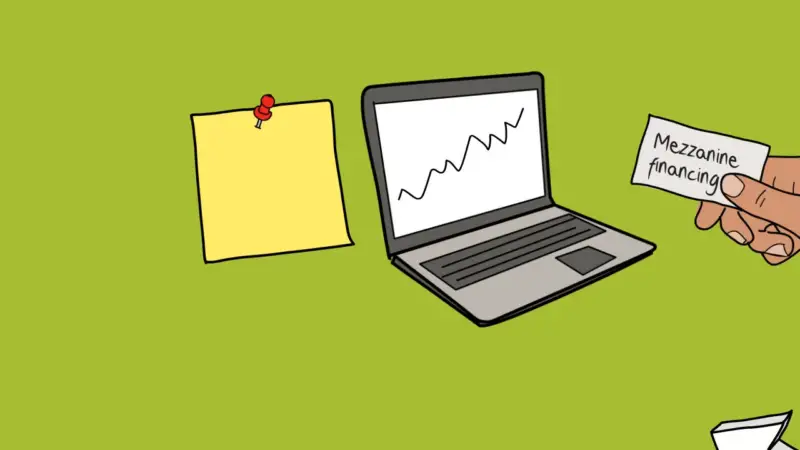Investing in illiquid assets can be a smart strategy for your portfolio, offering the potential for higher returns and reduced volatility over the long term.
It’s important to choose the right illiquid investments to create a well-balanced and diversified portfolio.
Options include real estate, private equity, infrastructure, and collectibles, each with its own risks and benefits.
Today, illiquid investments are gaining popularity among investors looking for long-term growth and stability.
These investments include assets like private companies, real estate ventures, and infrastructure projects that can’t be quickly turned into cash.
While they require a long-term commitment, they can provide substantial returns when managed well.
Table of Contents
Toggle1. Direct Property Investment

When you invest directly in properties, such as residential homes or rental units, you face challenges related to liquidity.
Selling a home is typically a lengthy process involving listing the property, negotiating with buyers, and closing the deal, which can take several months.
The market conditions and the property’s location significantly impact its liquidity.
A well-located property in a high-demand area may sell faster, but even then, it’s unlikely to match the speed of liquidating stocks or bonds.
Consider the potential for significant carrying costs, including maintenance, property taxes, and possible mortgage obligations, which add to the financial strain during the holding period.
2. Commercial Real Estate

Investing in commercial real estate (CRE) includes purchasing office buildings, retail spaces, or industrial properties.
These investments often come with higher financial barriers to entry and longer sales cycles compared to residential properties.
Commercial properties tend to be even less liquid due to the specialized nature of the buyers and the higher price points involved.
Leasing out commercial spaces can also be time-consuming and requires managing leases and tenants.
While CRE offers valuable income streams through rental income, it does not provide the ease of liquidation found in more liquid assets like stocks or bonds.
These factors underscore why real estate investments are typically seen as long-term commitments, with less flexibility for rapid exits.
3. Venture Capital

Venture capital (VC) focuses on investing in early-stage companies, particularly start-ups with high growth potential.
You provide crucial funding in exchange for equity, betting on the future success of these enterprises.
Historically, VC investments have backed some of the most successful tech companies, offering substantial returns though they carry significant risk.
VC funds typically have a long investment horizon, often 5-10 years, as companies need time to mature.
You gain exposure to innovative sectors but face the risk of company failure.
4. Buyout Funds

Buyout funds, or leveraged buyouts, involve purchasing a significant or controlling interest in established companies.
Usually, you use a mix of equity and borrowed funds to acquire these businesses.
The aim is to enhance their value through strategic restructuring and operational improvements before an eventual exit, often through a sale or public offering.
These investments usually target more mature companies than VC, focusing on reducing inefficiencies and increasing profitability.
Buyout funds offer the potential for high returns, although they also carry risks related to debt levels and market conditions.
The investment period is medium to long-term, generally ranging from 3 to 7 years.
5. Hedge Funds

Hedge funds offer a unique opportunity for illiquid investments.
These funds pool together the assets of investors aiming to generate high returns.
Hedge funds use diverse strategies:
- Long/short equity
- Global macro
- Event-driven
These strategies often involve complex and sophisticated trading.
One characteristic of hedge funds is their use of leverage. This can amplify returns but also increase risk. Hedge funds typically require long-term commitments from their investors.
Side pockets are a tool used by hedge funds. A side pocket is an account used to separate illiquid assets from more liquid investments.
Risks associated with hedge fund investments include:
- Liquidity risk
- Market risk
- Managerial risk
Hedge funds can be highly illiquid, meaning you might not be able to access your money quickly without incurring significant penalties.
You should consider these aspects before investing in hedge funds.
By understanding these features, you can better assess if hedge funds align with your investment goals and risk tolerance.
6. Precious Metals

Precious metals like gold and silver are significant investments within commodities. Gold, being highly liquid, trades actively in various markets, including physical, OTC forward, and futures markets.
Silver and other metals like platinum and palladium have their own trading volumes but typically exhibit lower liquidity compared to gold.
Investing in these metals often involves buying physical bullion, futures contracts, ETFs, or ETNs based on the metals.
Physical possession can secure value but comes with storage and insurance costs. Futures and ETFs provide easier transactions but involve market risks.
7. Agricultural Products

Agricultural products such as grains, coffee, and livestock present another avenue for commodities investing.
These products rely heavily on seasonal cycles and weather conditions, affecting their pricing and availability. Agricultural commodities are typically traded on global markets, providing access to diverse regions.
Products like corn, wheat, and soybeans can be bought through futures contracts or ETFs.
These investments can diversify a portfolio and hedge against inflation.
You should be prepared for price volatility due to factors like climate change, political instability, and changes in demand.
Investing in agricultural products can be profitable but requires an understanding of market dynamics and external influences.
8. Art and Antiques

Art and antiques are often considered the pinnacle of collectible investments. High-net-worth collectors frequently target these assets for their aesthetic value and potential for large financial returns. Paintings, sculptures, and antique furniture are prime examples.
To start, you’ll need to understand the art market, which involves knowing artists, styles, and historical contexts.
High-end art saw significant purchases in recent years, with median expenditures by collectors reaching substantial amounts.
For instance, a report by Art Basel and UBS noted a median expenditure of $180,000 in early 2022.
9. Rare Coins and Stamps

Rare coins and stamps offer another robust collectible market.
Their value often appreciates over time, particularly for items in mint condition. Coins and stamps are easier to store than large art pieces but still require careful handling to maintain their value.
For rare coins, knowing the mint year, condition, and historical significance are crucial. Coins in excellent condition can be highly valuable, as demonstrated by historical auction results.
Stamps, especially those from limited print runs or with printing errors, are highly sought after by collectors.
This market requires expertise in philately to discern which items hold the most value.
10. Market-Linked CDs

Market-linked CDs (MLCDs), also known as equity CDs, are bank-issued certificates of deposit with returns linked to stock market performance.
Unlike traditional CDs, MLCDs aim to offer higher returns based on equity market movements, making them attractive for risk-tolerant investors seeking better yields.
Although MLCDs often guarantee your principal if held to maturity, they usually come with long-term commitments and aren’t easily liquidated without substantial penalties.
Fees can diminish your returns and may not be apparent upfront.
Additionally, if the market underperforms, your yield on an MLCD could be lower than that of a conventional CD.
This balance of potential returns and complex conditions makes MLCDs suitable for those who understand the intricacies and risks.
11. Limited Partnerships

These investments often have terms ranging from 5 to 15 years. They are typically illiquid, meaning there is no secondary market for regular trading.
You must be prepared to hold your investment for a long period. Exiting before the partnership ends can result in significant losses as highlighted by centsai.
12. Mezzanine Finance

Mezzanine finance stands between equity and debt financing, typically used during a company’s growth or acquisition phases. This hybrid form of financing combines elements of borrowing and investing.
Investors receive higher returns, usually through interest payments and equity kickers. These payments can include regular interest or a percentage of ownership in the company.
While mezzanine finance offers appealing yield opportunities, it carries more risk than senior debt due to its subordinate position in the capital structure.
This means you are paid after senior debt holders in the event of a default.
13. Luxury Watches and Jewelry

Luxury watches and jewelry often hold their value well over time. Brands like Rolex, Patek Philippe, and Cartier are renowned for their craftsmanship and exclusivity.
Rolex Daytona and Patek Philippe Nautilus are examples that fetch high prices at auctions.
Additionally, rare gemstones and limited-edition pieces can significantly appreciate in value. For instance, a diamond-studded bracelet with a flawless grade will outperform its lower-quality counterparts.
14. High-End Vehicles

High-end vehicles, particularly classic and rare models, attract collectors and investors. Brands like Ferrari, Lamborghini, and Porsche lead this category.
For example, a Ferrari 250 GTO can sell for millions of dollars at auctions.
Maintenance, storage conditions, and provenance play pivotal roles in an investment’s success.
Limited production runs and iconic status can drive up the value of specific models.
Moreover, the vehicle’s history and original parts contribute significantly to its valuation.
15. Equity-Linked Notes

Equity-linked notes (ELNs) are a type of structured product tied to the performance of underlying stocks or indices.
These notes can provide higher returns than traditional fixed-income products, but they also come with elevated risks. If the underlying equity performs poorly, you might incur significant losses.
ELNs often include a cap on gains to limit the issuer’s risk.
This means while you benefit from positive equity performance, your returns are limited.
Liquidity is another concern; selling an ELN before maturity can be challenging, and secondary markets may not always exist.
Related Posts:
- Stake Secures $14M to Expand Fractional Property…
- How a B2B Payments Startup Attracted Investments…
- Top 10 ChatGPT Alternatives You Should Know About in 2024
- 9 HindiLinks4u Similar Sites You Should Know in 2024
- What’s Fueling Finland’s Startup Success? 7 Key…
- Are You Falling for Biased Business Strategies…










